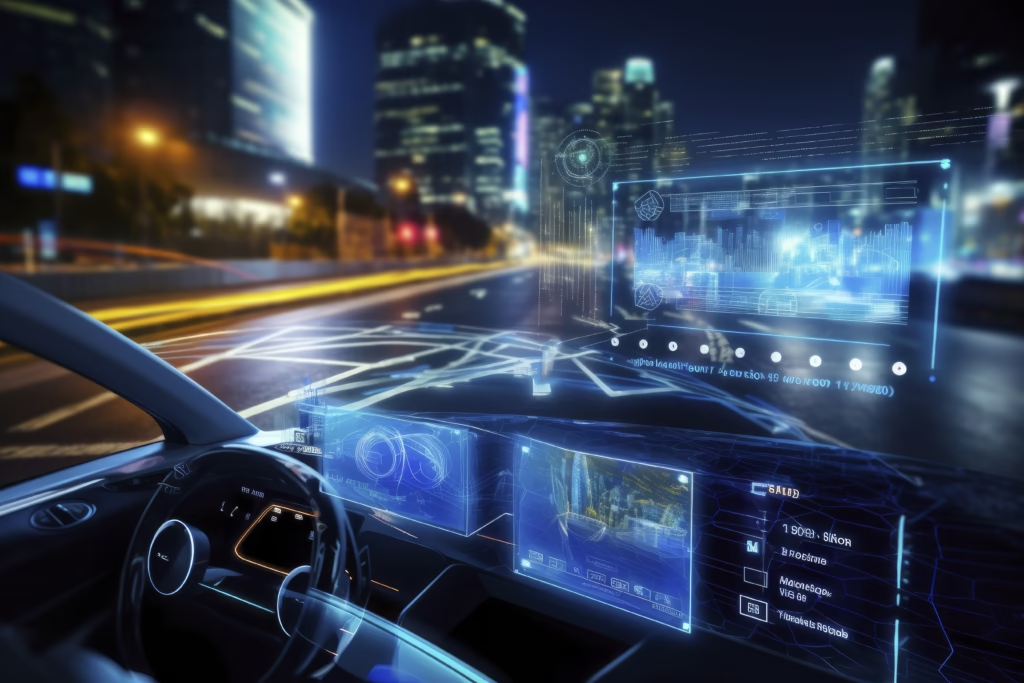Self-driving cars, also known as autonomous vehicles, are designed to navigate roads without human intervention. These vehicles use cutting-edge technologies like cameras, sensors, radar, and artificial intelligence (AI) to perceive their surroundings and make real-time decisions. From detecting pedestrians to adjusting for road conditions, these cars are engineered to handle complex driving scenarios. The ultimate goal of self-driving cars is to create a safer, more convenient, and efficient way to travel while minimizing human error, which causes most road accidents today.
The Evolution of Self-Driving Cars: A Historical Perspective
The concept of self-driving cars is not new. It dates back to the mid-20th century when engineers first imagined automated vehicles. In the 1980s, research institutions like Carnegie Mellon University began experimenting with early prototypes. By the 2000s, significant breakthroughs occurred with the introduction of advanced AI and sensor technology. Google’s self-driving car project, launched in 2009, marked a pivotal moment, showcasing functional prototypes capable of navigating urban roads. Today, with companies like Tesla, Waymo, and General Motors leading the way, autonomous vehicles are closer than ever to becoming mainstream.
How Do Self-Driving Cars Work? The Technology Behind the Wheel
Self-driving cars rely on a mix of hardware and software to function seamlessly. Cameras and LiDAR (Light Detection and Ranging) create a detailed 3D map of the car’s surroundings. Radar systems measure distances and detect obstacles, even in poor visibility. However, AI processes this data in real time to identify objects, predict their movements, and determine the safest course of action. GPS and high-definition maps provide accurate navigation. These systems work together to allow the car to accelerate, steer, brake, and make decisions without human input, continuously improving through machine learning algorithms.
Benefits: Why They’re the Future of Mobility
The advantages of self-driving cars are vast. First, they promise to reduce accidents caused by human error, such as distracted driving or speeding. Second, they offer convenience; passengers can use travel time for work, rest, or entertainment. Third, autonomous cars can improve traffic flow, as they communicate with each other to avoid congestion. Additionally, they make transportation accessible for those unable to drive, like the elderly or people with disabilities. These benefits position self-driving cars as a cornerstone of future mobility.
Autonomous Cars and Their Impact on Society: Jobs, Lifestyle, and the Economy
The rise of self-driving cars will bring significant societal changes. Jobs in the transportation sector, like truck and taxi drivers, may decline as automation takes over. However, new industries will emerge, such as AI development, autonomous vehicle maintenance, and data analytics. On a personal level, commuting will become less stressful, freeing up time for other activities. Economically, reduced accidents could lower healthcare costs, while increased efficiency in logistics may reduce the price of goods. This transformation will require adaptation but holds immense potential for societal growth.

The Role of Artificial Intelligence
AI is at the core of self-driving cars. It enables the vehicle to analyze its environment, predict potential hazards, and make decisions instantly. Machine learning algorithms allow the car to learn from past experiences, improving its performance over time. AI also helps with predictive maintenance by identifying potential issues before they lead to breakdowns. Without AI, however, the level of precision and adaptability required for autonomous driving would be impossible to achieve.
Safety Features: How They Prevent Accidents
Safety is a primary focus of self-driving cars. Although, Advanced features include automatic emergency braking, lane departure warnings, and collision avoidance systems. These cars continuously monitor their surroundings using cameras and sensors, ensuring they can respond to potential hazards faster than human drivers. Redundant systems ensure that even if one component fails, the car remains functional. By removing human error from the equation, self-driving cars aim to create safer roads for everyone.
Self-Driving Cars and the Environment: A Step Towards Sustainability?
Autonomous vehicles could play a key role in reducing environmental impact. Although, By optimizing driving patterns, they can minimize fuel consumption and lower emissions. Electric self-driving cars go a step further by eliminating reliance on fossil fuels entirely. Additionally, shared autonomous fleets could reduce the total number of vehicles on the road, easing congestion and pollution. These innovations align with global efforts to create more sustainable cities.
How Autonomous Vehicles Are Transforming Urban Transportation Systems
Urban areas are already seeing the potential of self-driving cars. These vehicles can reduce traffic congestion by optimizing routes and communicating with traffic management systems. Although, Autonomous taxis and buses provide affordable and efficient transportation options, reducing the need for private car ownership. Parking lots could be repurposed into green spaces or housing developments, making cities more livable. The integration of autonomous cars into urban planning has the potential to revolutionize how cities function.
Real-World Applications of Self-Driving Cars: Beyond Personal Use
Self-driving cars are not just for personal commuting. In logistics, autonomous trucks can operate 24/7, ensuring faster and more efficient deliveries. Public transportation systems can use self-driving buses to enhance service reliability. Emergency services, like ambulances, can respond more quickly with autonomous technology. Even agriculture is benefiting, with self-driving tractors improving productivity. The versatility of these vehicles goes far beyond individual use.
Self-Driving Cars in 2025 and Beyond: What to Expect Next
By 2025, self-driving cars are expected to become more accessible and reliable. Advances in AI and sensor technology will reduce costs, making them affordable for a wider audience. Cities will likely adopt autonomous public transport systems, and long-haul trucking may become fully automated. As regulations evolve, the integration of self-driving cars into everyday life will accelerate, shaping a new era of transportation.
The Cost of Self-Driving Cars: Are They Affordable for the Average Consumer?
Currently, self-driving cars are expensive due to their advanced technology. However, as production scales and innovation progresses, prices are expected to decrease. Shared ownership models, such as ride-sharing fleets, could make them more accessible. Governments and businesses may also provide incentives to encourage adoption, further lowering the financial barrier.
The Future of Self-Driving Cars: Opportunities and Risks
The future of self-driving cars is both promising and challenging. On the one hand, they offer safer roads, increased accessibility, and environmental benefits. On the other hand, issues like cybersecurity, ethical decision-making, and job displacement pose significant risks. Collaboration between tech companies, policymakers, and society is essential to address these challenges and unlock the full potential of autonomous vehicles.
Are Self-Driving Cars the Road Ahead for Everyone?
Self-driving cars represent a groundbreaking shift in transportation. While there are hurdles to overcome, their potential benefits are undeniable. As technology continues to evolve and society adapts, autonomous vehicles could redefine how we travel, work, and live. The journey toward fully self-driving cars is still unfolding, but it’s clear they hold the promise of a smarter, safer, and more connected future.

